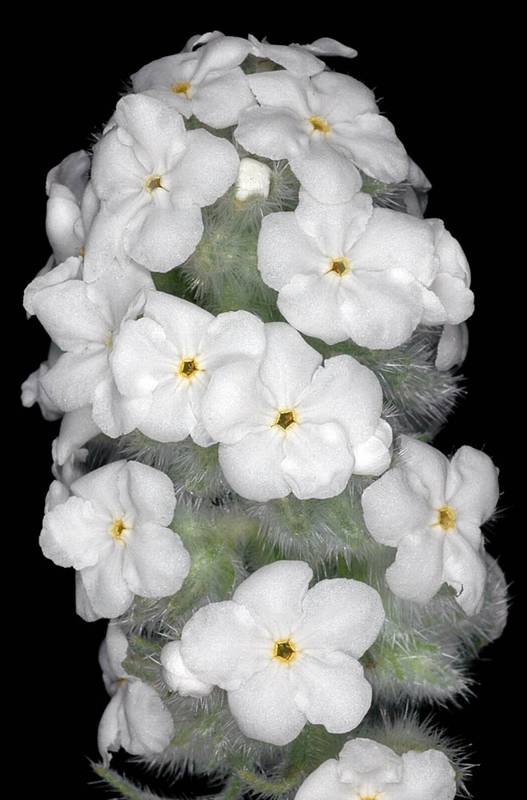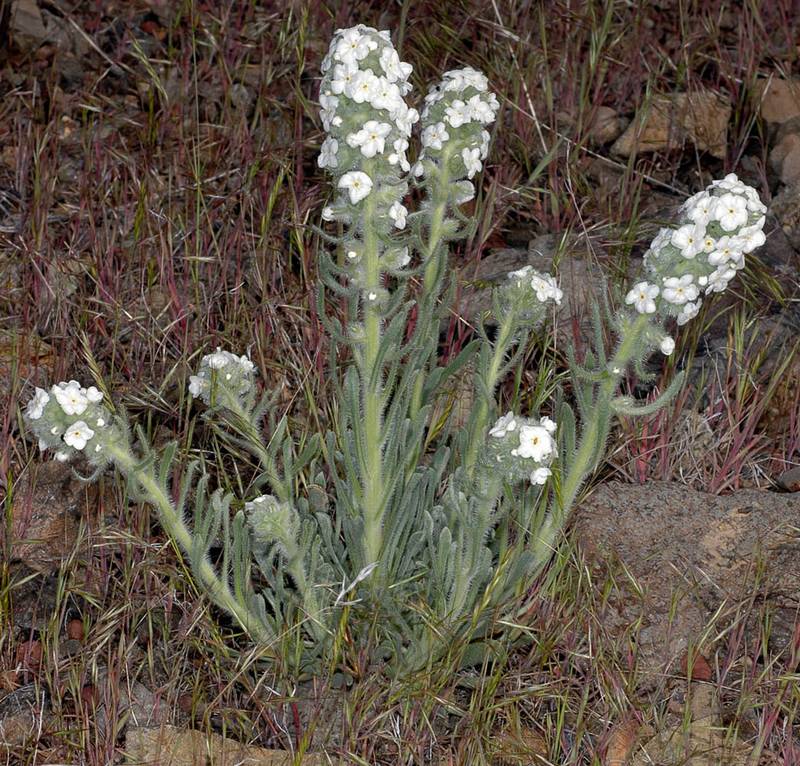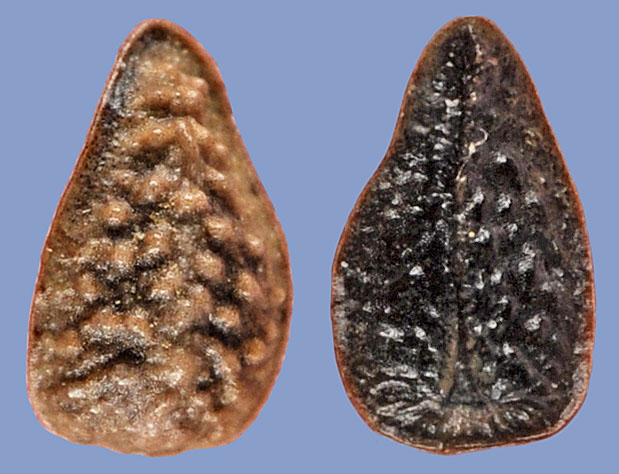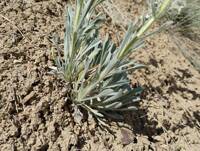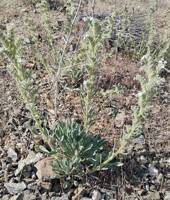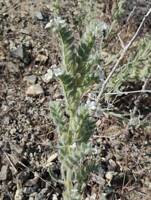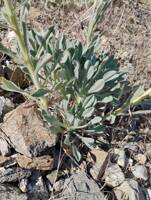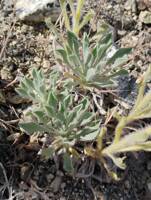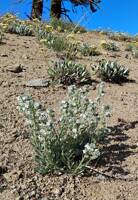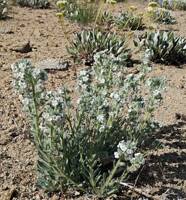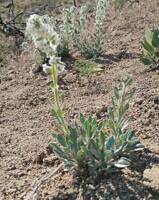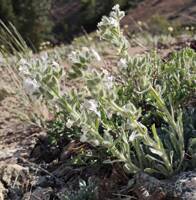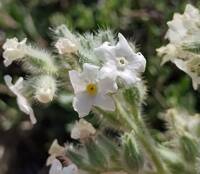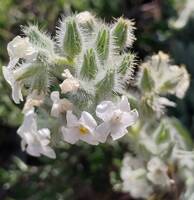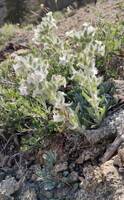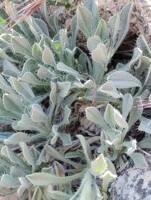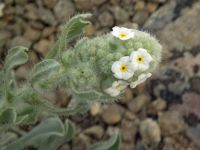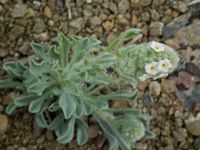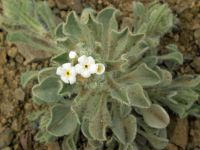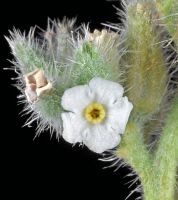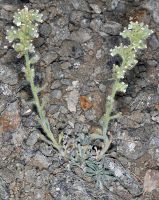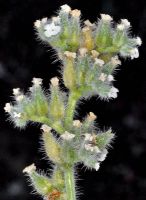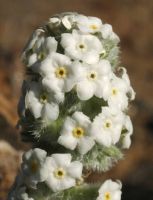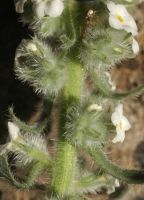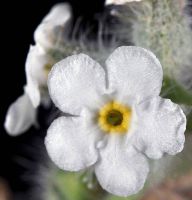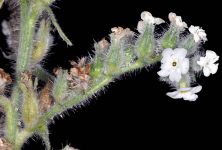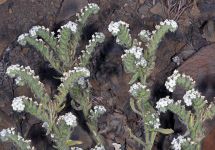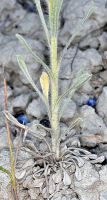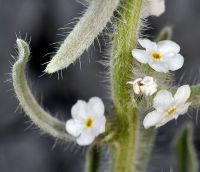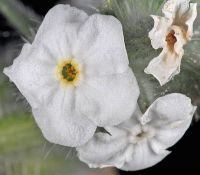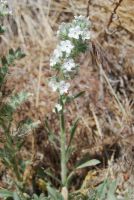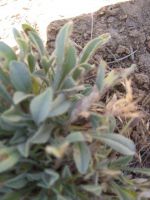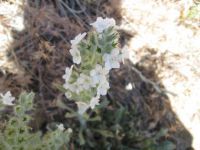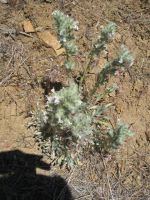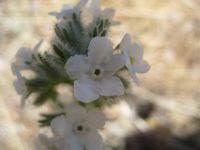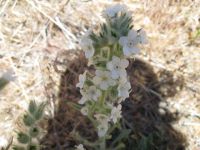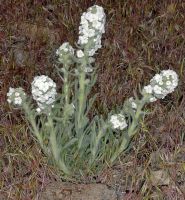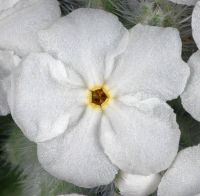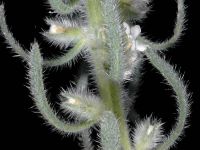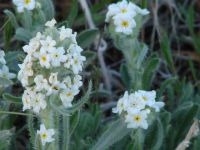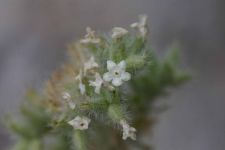Distribution: Occurring east of the Cascades crest and in the Columbia River Gorge in Washington; southern British Colombia to California, east to the northern Great Plains and Colorado.
Habitat: Dry, open places in the valleys, plains and foothills, occasionally higher.
Flowers: April-July
Origin: Native
Growth Duration: Biennial, Perennial
Conservation Status: Not of concern
Pollination: Bees, flies
Usually a short-lived perennial, the 1-several stems 1-5 dm. tall, with silky hairs and small blisters.
Basal leaves tufted, spatulate or oblanceolate, rounded or blunt-tipped, 2-8 cm. long and 4-15 mm. wide; cauline leaves more or less reduced.
Inflorescence an elongate, narrow panicle, with short, bracteate spikes along the main stem; calyx divided to the base, the 5 lobes bristly; corolla white, broad and showy, 5-lobed, the limbs 8-12 mm. wide, the tube equaling the calyx, with hairy appendages at the top of the tube opposite the corolla lobes; style surpasses the nutlets.
Nutlets 4, lance-ovate, 3-5 mm. long, attached to the style.
Publication: Pittonia 1(2): 58. 1887.
Cryptantha sheldonii (Brand) Payson
Oreocarya celosioides Eastw.
Oreocarya sheldonii Brand
PNW Herbaria: Specimen records of Oreocarya glomerata in the Consortium of Pacific Northwest Herbaria database
WA Flora Checklist: Oreocarya glomerata checklist entry
OregonFlora: Oreocarya glomerata information
E-Flora BC: Oreocarya glomerata atlas page
CalPhotos: Oreocarya glomerata photos

